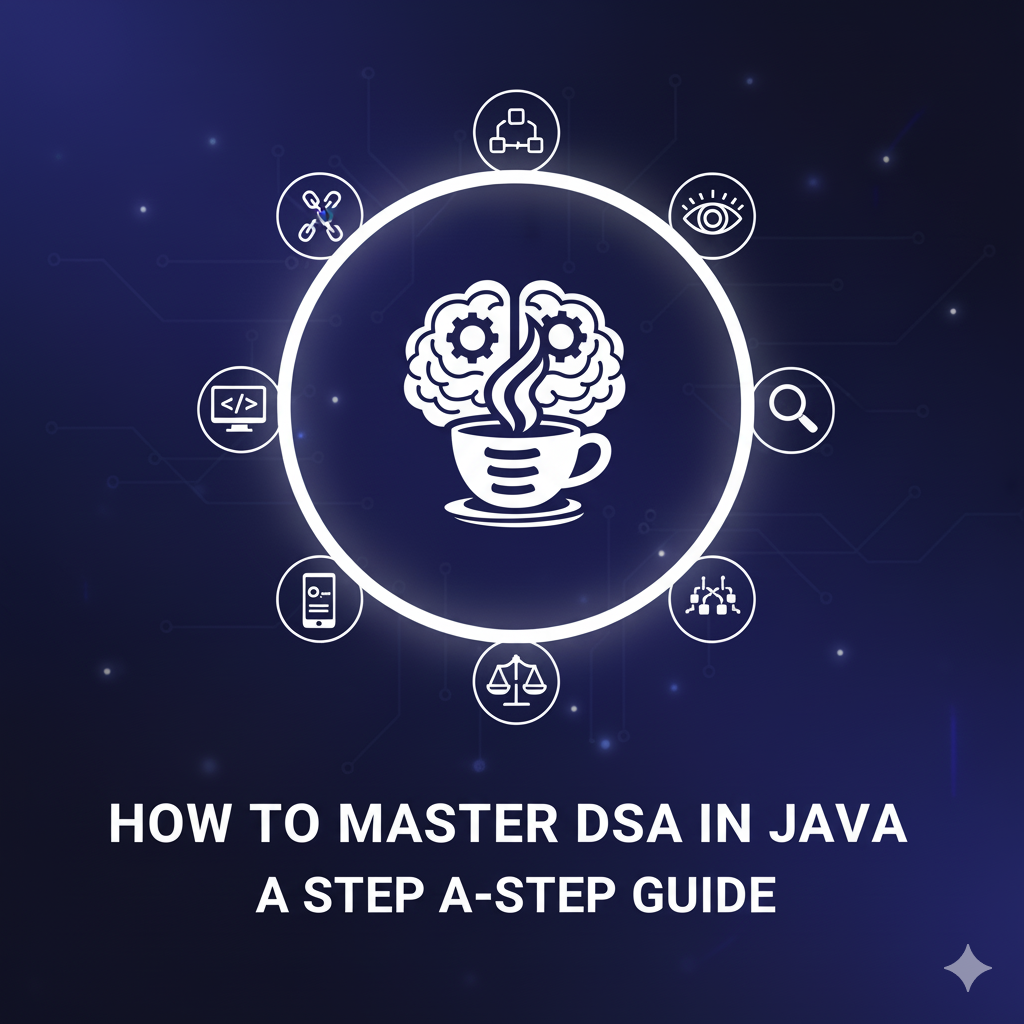How to Master DSA in Java
Data Structures and Algorithms (DSA) are the building blocks of efficient programming. Mastering DSA in Java not only strengthens your problem-solving skills but also enhances your ability to crack coding interviews and excel in competitive programming. This guide will walk you through the process of mastering DSA in Java step-by-step.
Why Learn DSA in Java?
Java is one of the most popular programming languages for learning DSA due to its robust libraries, platform independence, and ease of debugging. Here's why you should consider Java:
- Rich Libraries: Java provides collections like
ArrayList,HashMap, andTreeSetthat simplify DSA implementation. - Object-Oriented: Java's object-oriented approach helps in designing modular and reusable DSA solutions.
- Community Support: Java has an extensive community, making it easy to find resources and solutions.
Step-by-Step Roadmap to Master DSA in Java
1. Learn the Basics
Before diving into advanced topics, ensure you have a strong grasp of Java fundamentals:
- Understand data types, loops, and conditionals.
- Familiarize yourself with Java's Collections Framework.
- Practice basic I/O operations.
2. Understand Core Data Structures
Mastering core data structures is essential for solving complex problems. Focus on the following:
- Arrays: Learn searching, sorting, and manipulation techniques.
- Linked Lists: Implement singly and doubly linked lists.
- Stacks and Queues: Practice problems like balanced parentheses and caching.
- Trees: Understand binary trees, binary search trees, and tree traversals.
- Graphs: Study graph traversal algorithms like BFS and DFS.
3. Master Key Algorithms
Once you're comfortable with data structures, move on to algorithms:
- Sorting: Implement and analyze algorithms like Merge Sort, Quick Sort, and Heap Sort.
- Searching: Understand binary search and its applications.
- Dynamic Programming: Solve problems like the Fibonacci sequence and 0/1 Knapsack.
- Greedy Algorithms: Learn concepts such as Huffman encoding and activity selection.
4. Practice, Practice, Practice!
Consistent practice is key to mastering DSA. Use the following platforms:
- LeetCode: Solve problems categorized by difficulty.
- HackerRank: Practice coding challenges and contests.
- GeeksforGeeks: Explore tutorials and problem sets.
5. Analyze Time Complexity
Understanding the time and space complexity of your code is crucial. Learn Big O notation and analyze your solutions to ensure they are efficient.
Tips to Stay Motivated
Learning DSA can be challenging, but these tips will help you stay on track:
- Set achievable goals and milestones.
- Join a community or find a study partner.
- Celebrate small victories to stay motivated.
FAQs
What is the best way to learn DSA in Java?
The best way to learn DSA in Java is to start with the basics, implement data structures and algorithms, and practice problem-solving on platforms like LeetCode and HackerRank.
How much time does it take to master DSA?
The time required depends on your dedication and prior experience. With consistent effort, you can achieve proficiency in 3–6 months.
Is Java the best language for DSA?
Java is an excellent choice for DSA due to its robust libraries and ease of use. However, other languages like Python and C++ are also popular.
Conclusion
Mastering DSA in Java is a rewarding journey that requires patience, practice, and persistence. By following the roadmap and tips shared in this guide, you'll be well on your way to becoming a DSA expert. Remember, consistent practice and understanding the fundamentals are key to success.


